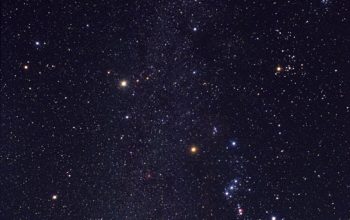Check out the main astronomical actors taking the stage for astronomers to watch for the week of January 7th through the 14th. Happy stargazing!
January 7th: The Little Dipper
Look straight down from Polaris, known as the North Star, to find the dim Litter Dipper
January 8th: Aldebaran and the Moon
Look to the lower left of the Moon to spot the bright orange Aldebaran, the star known as the “eye of the bull”. The Pleiades can be spotted to the upper right of Aldebaran.
January 9th: Aldebaran and the Moon, again
Only tonight Aldebaran can be spotted to the upper right of the Moon. Since Aldebaran is a dying star, it bloats to a diameter a dozen times that of the Sun.
January 10th: Moon occults Aldebaran
Occultation is when one object hides another in the night sky. For sky watchers in Saudi Arabia, India, China, and Japan, the Moon will occult Aldebaran.
January 11th: Full Moon and Venus
If you spot a bright object in the night or at twilight, it is most likely Venus. Its position is highest at sunset. Venus presence in the sky lasts longer than any other time because it stands farthest from the Sun.
The Moon will be exactly full at 6:34 a.m. Thursday morning EST.
January 12th: Neptune and Venus
Neptune and Venus pass near each other, about 0.4 degrees apart for North American sky watchers.
If you have watched Jupiter this month, you may have noticed its western side veiled in a shadow. This is because Jupiter is at western quadrature, meaning it measures 90 degrees west of the Sun.
January 13th: Last chance to see Vega
Believe it or not, the summer star Vega can just be seen over the northwest horizon during and after nightfall. It is higher up in the sky for northern latitudes, but if you are too far south it will be invisible.
January 14th: Moon and Regulus
After rising at 8 p.m., the waning gibbous Moon and Regulus begin the night near each other. By dawn, the Moon will have moved east, further from Regulus.
Sources: StarDate, Earth and Sky


